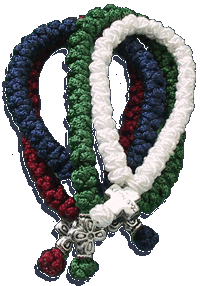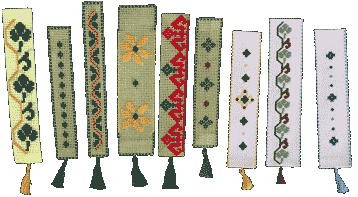Icons
By the ancient Byzantine canons, icons are made in the same way today
as over ten centuries ago (in fact, the Holy Apostle Luke painted the
first icons of the Theotokos after Pentecost, in the first year following
Christ's Resurrection; it is a fact that speaks of the history of iconography
being as old as the history of the Church).
 All
materials used in icon painting are of natural origin. The board
(which can be of various dimensions) is of high quality wood (walnut,
oak, ash). As a basis a linen canvas is stuck on it with glue made
of animal skin or fish. After the canvas is equally and well affixed
and the glue is set (dry and hardened), a plaster ground is applied.
All protecting varnishes and coats are made of natural resin. Then
the gold is glued in form of square golden sheets. In the past
icon painters were also mineralogists and chemists, and they prepared
the pigments which they used in painting. Colours of natural origin
are used in the present as well, though they are rather expensive.
With respect to painting technique and the dominant shades of colour,
icon painters follow two of the most distinguished schools (techniques,
trends) in iconography: the Cretan School or the Macedonian School.
All
materials used in icon painting are of natural origin. The board
(which can be of various dimensions) is of high quality wood (walnut,
oak, ash). As a basis a linen canvas is stuck on it with glue made
of animal skin or fish. After the canvas is equally and well affixed
and the glue is set (dry and hardened), a plaster ground is applied.
All protecting varnishes and coats are made of natural resin. Then
the gold is glued in form of square golden sheets. In the past
icon painters were also mineralogists and chemists, and they prepared
the pigments which they used in painting. Colours of natural origin
are used in the present as well, though they are rather expensive.
With respect to painting technique and the dominant shades of colour,
icon painters follow two of the most distinguished schools (techniques,
trends) in iconography: the Cretan School or the Macedonian School.
There is much to be said about the icon: about painting techniques,
about the theology of the icon, about colour symbolism, about the history
of icon painting...
The value of the icon depends on many factors. We need certain knowledge
and experience to learn to distinguish a canonically made icon from
the one which is not and is therefore of no sacred value.
The price of the icon is determined by the dimensions of the board,
the number of images painted, the size of the area covered with gold
(which itself can be of various quality), and so forth. The recently
made Byzantine icons in the monastic iconographic ateliers in the Strumica
diocese are a new testimony to the regeneration of the living patristic
tradition in the Macedonian Orthodox Church.
How to order an icon made by monastics



The price of the icon depends on several factors: how
many iconic faces are presented, i.e. whether the icon depicts a saint
or a feast, the dimensions of the board and quality of the golden leaves
which cover the background (in carat).
Important: please note that it may take up to 30 days for an icon to
be made. When placing an order, please indicate which saint or feast
you would like to be painted on the icon.
- Small icon, 20cm x 30cm, with one iconic face,
covered with gold – US$ 645 (shipping included) order - Medium size icon, 30cm x 50cm, with one iconic face,
covered with gold – US$ 1275 (shipping included) order - Larger icons (for iconostasis) are also available - please contact us for a quote
Prayer Ropes

We use the prayer rope to count the Jesus prayers, which we say aloud or inaudibly when we pray, while the attention of the mind is concentrated on the prayer words: "Lord Jesus Christ, have mercy on me (us)". Each knot marks one prayer said.
Tradition has it that somewhere around in the fourth century AD an angel of the Lord revealed the skill of knitting prayer ropes to a monk in the desert after he had fervently prayed, since demons had deliberately tempted him and he could not fulfil thoroughly his prayer rule. The angel taught him to knit the prayer knots in a way that each knot consisted of seven cruciform small inner knots, which the demon could not untie.
Monastics knit them in their cells, while repeatedly saying the Jesus prayer. When they knit a prayer rope especially for someone, they pray for that person who will use the prayer rope in the future.
To order a prayer rope, please choose from below
 Bookmarkers
Bookmarkers